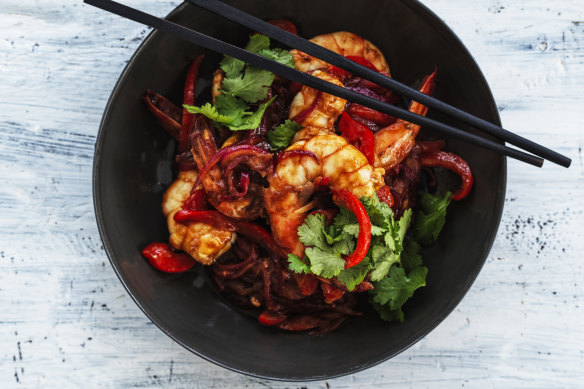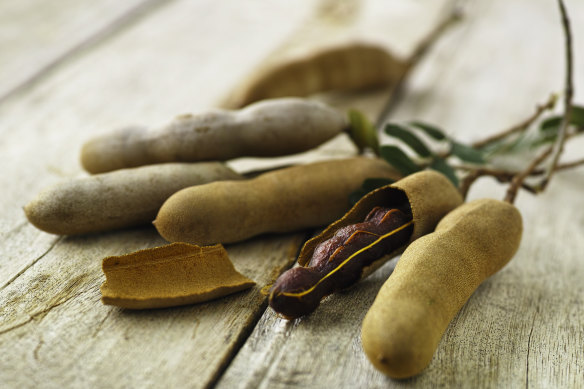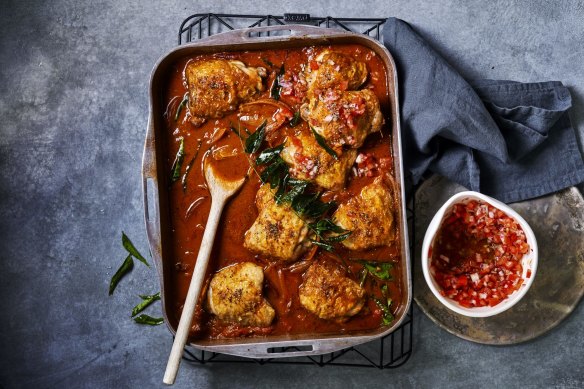Everything you need to know about ... tamarind
Easy to buy and use, tamarind’s clean tang is favoured by chefs everywhere.
A dark paste from the seed pods of a tropical tree, tamarind is that clean note of tart sourness in Indian chutneys, massaman curries or pad Thai.
Easy to buy and use, its clean tang is favoured by chefs from Tony Tan to Dan Lepard.

What is it?
Tamarind trees are native to Africa but now grow across India, South-East Asia and tropical Latin America.
They produce what looks like a fat brown bean as long as your hand. Inside, the seeds are surrounded by a dark paste.
The seed pods are split, and the innards are dried and packed into blocks with a date-like texture.
This can be cooked, filtered into a liquid paste and sold in jars. Most commercially available tamarind is harvested in India.
The paste is rich in tartaric acid and ascorbic acid (vitamin C) that brings a sour fruity punch to foods and drinks across the tropics.

Why do we love it?
Tamarind trees have been grown in northern Australia for more than 400 years. Makassar traders planted them on the Coburg Peninsula east of Darwin. The vitamin C in tamarind alleviated the scurvy traders experienced after sailing 1500 kilometres from their home in modern Indonesia to collect dried sea cucumbers harvested by Indigenous people.
“I grew up with tamarind,” says Malaysian-born chef and now cooking school owner Tony Tan.
“It was medicine. We also used tamarind water to remove the verdigris from our copperware. We used it in our sambal to add a tangy note and a fruity sweetness. Ripe tamarind can be 10 per cent sugar.”
A stone’s throw from Sydney’s Central Station is Thai restaurant Spice I Am, where chef Sujet Saenkham’s team uses tamarind extensively.
He learnt to cook at his mother’s side, and his unabashedly bold Thai flavours permeate every dish, including the sharp and tangy yet seductively sweet tamarind sauce served with crisp soft-shelled crab.
Tamarind is also used in duck, prawn and snapper dishes. Thai chefs love tamarind because the sourness and fruity flavour remain throughout cooking, unlike lime and other types of citrus whose aroma breaks down during cooking.

How do you use it?
- Make a refreshing, tangy drink by dissolving one teaspoon each of tamarind paste and sugar in a glass of water. Add ice and enjoy.
- Try Tony Tan’s traditionalasam udang, a wok-cooked Nyonya dish of sizzling prawns finished with a tamarind sauce.
- Neil Perry makes a delicious tangy lentil dish rich with tomatoes and garam masala.
- Try Thai fried beef with tamarind sauce from Karen Martini, who mixes tamarind, dried shrimp and coriander roots to make a sauce for wok-seared beef.
- Tamarind’s fruity notes work well in Dan Lepard’s coconut, date and tamarind cake.
Where do you get it?
Look for fresh tamarind pods in markets. Tamarind paste is available in jars in supermarkets and Asian food stores, while blocks of tamarind can be bought in Indian and Asian grocers.
Due to tamarind’s acidity, it does not spoil easily and lasts for six months or longer.
Send your culinary conundrums and ingredient suggestions to brainfood@richardcornish.com.au or Twitter and Insta @foodcornish.
The best recipes from Australia's leading chefs straight to your inbox.
Sign up- More:
- Cooking
- Brain food
